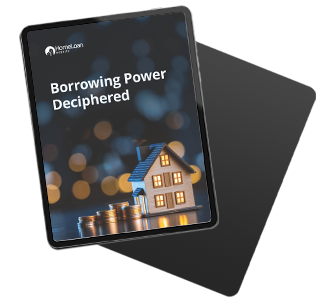The Higher Education Contribution Scheme (HECS), now called the Higher Education Loan Program (HELP), has given thousands of Australians the chance to access education they might not have been able to afford otherwise. It’s helped many pursue their goals without worrying about upfront costs.
But there’s another side to the story. Traditionally, lenders factor in HELP repayments when assessing borrowing capacity, which can reduce how much you’re able to borrow, even if you’re close to paying it off.
Now there’s some exciting news. A number of lenders, including some of the majors, are starting to exclude HELP repayments from serviceability altogether, if your HELP debt will be fully repaid within the next 12 months.
HECS Debt Servicing Exception
From 30 September 2025, customers unable to meet serviceability requirements due to an existing HECS debt may be eligible for an exception that removes the HECS repayment from their servicing assessment. This exception is available exclusively for home loan applications and is designed to boost borrowing capacity for qualifying applicants.
Eligibility Criteria
To qualify for this exception, all of the following conditions must be met:
- The customer fails servicing with the HECS debt present.
- The HECS debt will be repaid in the next 12 months (the time to repay is calculated by dividing the annual repayment by the limit).
- Servicing passes when the HECS repayment is excluded.
- The customer is not applying for any other serviceability exception (e.g., 1% refinance buffer, extended leave, etc.).
- Higher Education Loan Program (HELP)
- VET Student Loan (VSL)
- Student Financial Supplement Scheme (SFSS)
- Student Start-up Loan (SSL)
- ABSTUDY Student Start-up Loan (ABSTUDY SSL)
- Australian Apprenticeship Support Loan (AASL) – previously known as Trade Support Loan (TSL)
Impact on Borrowing Power
HECS repayments are always based on income levels, meaning their impact on borrowing power increases as income rises. At higher income levels, excluding HECS debt from servicing can result in large improvements in borrowing power.
The example data below assumes a single applicant with no dependents or other liabilities, and only minimum living expenses.
| Income Level | Borrowing Power without HELP Debt | Borrowing Power with HELP Debt | Difference ($) | Difference (%) |
|---|---|---|---|---|
| $60,000 | $366,000 | $366,000 | $0 | 0.00% |
| $70,000 | $426,000 | $418,000 | $8,000 | 1.88% |
| $80,000 | $475,000 | $450,000 | $25,000 | 5.26% |
| $90,000 | $552,000 | $511,000 | $41,000 | 7.43% |
| $100,000 | $619,000 | $565,000 | $54,000 | 8.72% |
| $110,000 | $659,000 | $587,000 | $72,000 | 10.93% |
| $120,000 | $727,000 | $643,000 | $84,000 | 11.55% |
| $130,000 | $796,000 | $700,000 | $96,000 | 12.06% |
| $140,000 | $847,000 | $728,000 | $119,000 | 14.05% |
| $150,000 | $916,000 | $780,000 | $136,000 | 14.85% |
| $160,000 | $953,000 | $799,000 | $154,000 | 16.16% |
| $170,000 | $1,016,000 | $848,000 | $168,000 | 16.54% |
| $180,000 | $1,079,000 | $898,000 | $181,000 | 16.77% |
| $190,000 | $1,128,000 | $937,000 | $191,000 | 16.93% |
| $200,000 | $1,190,000 | $987,000 | $203,000 | 17.06% |
To find out how this exception could improve your mortgage eligibility, please call us on 1300 889 743 or complete our free assessment form.
Before You Buy: The Importance of Borrowing Power
The Secrets Of Borrowing Power And Maximising Your Mortgage Potential

Disclaimer: Over the next few days, you’ll receive additional guides to help you on your homebuying journey. Occasionally, you’ll receive carefully curated home-buying tips, offers & schemes, and news articles. You can unsubscribe any time you want. View our Privacy Policy
How Much Am I Paying In HECS Right Now?
You don’t start paying HECS-HELP until you reach a certain income level. Even once you reach higher income levels, the repayments are negligible because you don’t pay back any interest on the debt like a normal loan. Instead, part of your yearly income is withheld by the Australian Taxation Office (ATO) as per your income level. Here are the current repayment income thresholds and rates for HELP.
| Taxable Income | Repayment rate |
|---|---|
| Below $54,435 | Nil |
| $54,435-$62,850 | 1.0% |
| $62,851-$66,620 | 2.0% |
| $66,621-$70,618 | 2.5% |
| $70,619-$74,855 | 3.0% |
| $74,856-$79,346 | 3.5% |
| $79,347-$84,107 | 4.0% |
| $84,108-$89,154 | 4.5% |
| $89,155-$94,503 | 5.0% |
| $94,504-$100,174 | 5.5% |
| $100,175-$106,185 | 6.0% |
| $106,186-$112,556 | 6.5% |
| $112,557-$119,309 | 7.0% |
| $119,310-$126,467 | 7.5% |
| $126,468-$134,056 | 8.0% |
| $134,057-$142,100 | 8.5% |
| $142,101-$150,626 | 9.0% |
| $150,627-$159,663 | 9.5% |
| $159,664 and above | 10% |
Please refer to the ATO website for updates to the current repayment schedule.
The repayment thresholds and marginal rates are updated annually for the compulsory repayment of:
Break Free From HECS Debt Limits
Our mortgage brokers make sense of the messy details, speak human (not bank jargon), and connect you with lenders who see more than just a number on a page.
Along the way, we’ll help you make the most of your borrowing power and turn what feels complicated into something wonderfully doable.
Why wait? Your dream home is closer than you think. Call us on 1300 889 743 or fill in our online enquiry form.
